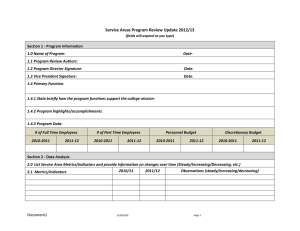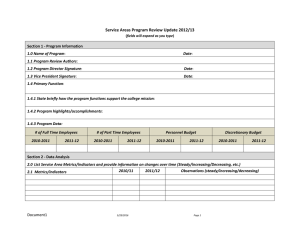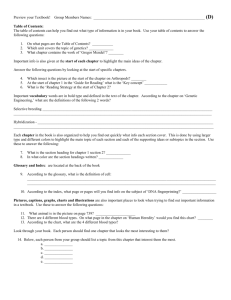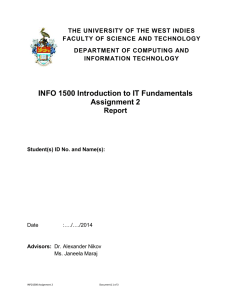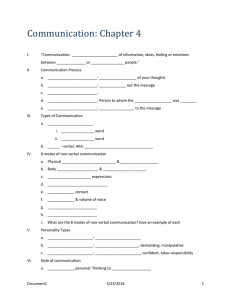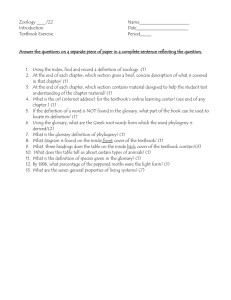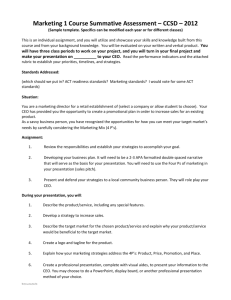scavenger hunt
advertisement
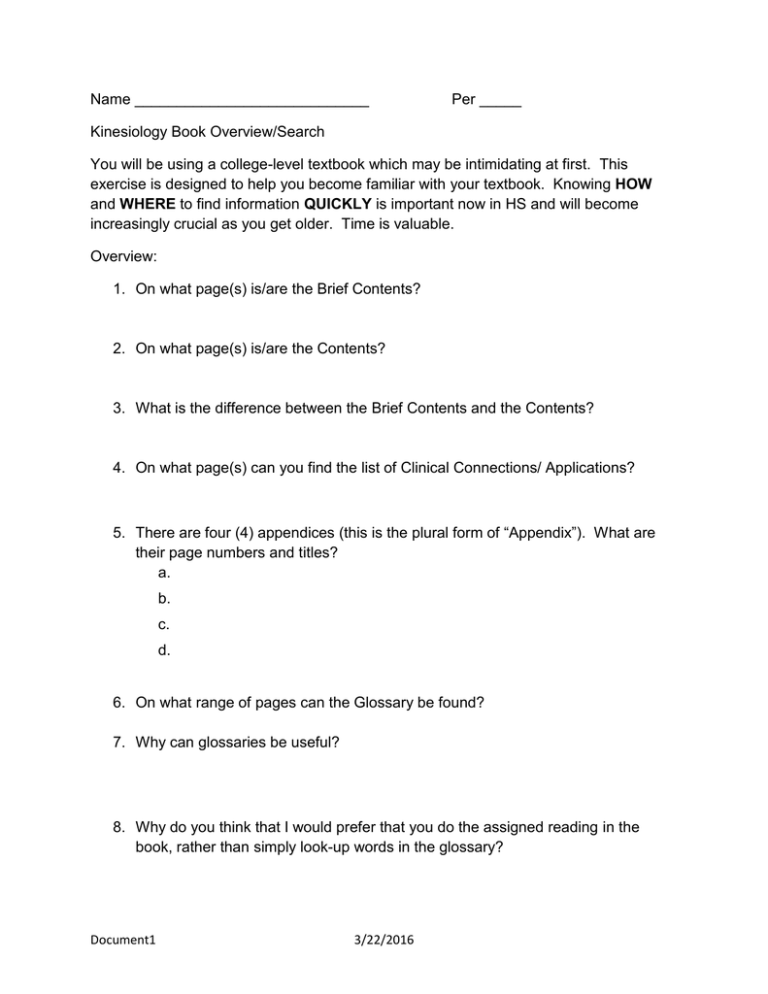
Name ____________________________ Per _____ Kinesiology Book Overview/Search You will be using a college-level textbook which may be intimidating at first. This exercise is designed to help you become familiar with your textbook. Knowing HOW and WHERE to find information QUICKLY is important now in HS and will become increasingly crucial as you get older. Time is valuable. Overview: 1. On what page(s) is/are the Brief Contents? 2. On what page(s) is/are the Contents? 3. What is the difference between the Brief Contents and the Contents? 4. On what page(s) can you find the list of Clinical Connections/ Applications? 5. There are four (4) appendices (this is the plural form of “Appendix”). What are their page numbers and titles? a. b. c. d. 6. On what range of pages can the Glossary be found? 7. Why can glossaries be useful? 8. Why do you think that I would prefer that you do the assigned reading in the book, rather than simply look-up words in the glossary? Document1 3/22/2016 9. On what pages can the Index be found? 10. Why can the index be useful? 11. What do the italicized numbers in the index mean? Search Questions: 12. In what UNIT (give me a number) will you learn about the “digestive system”? 13. What page does the Digestive System Unit start on? 14. On what page will you learn about the “Paths of Circulation” in the “Cardiovascular System”? 15. On what page(s) will you learn about “nephrons”? 16. What is a “nephron”? 17. On what page(s) would you learn about “coronary bypass surgery”? 18. What is the 6th Chapter Objective for Chapter 1? 19. What is Figure 1.3 showing? 20. ***CHALLENGING***: If you wanted to look at a picture or diagram of the “deep fibular nerve”, what page would you turn to? Document1 3/22/2016
